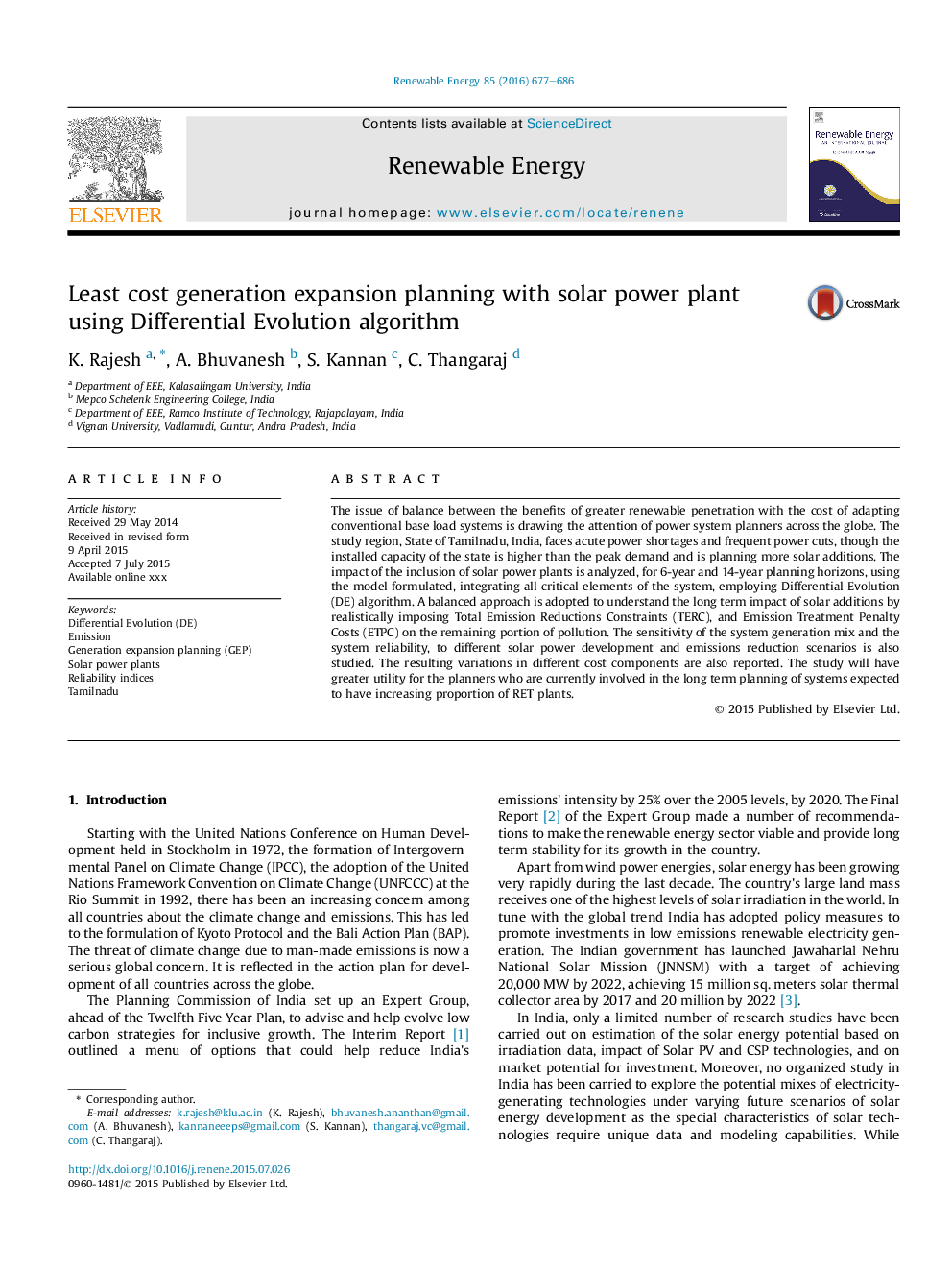| Article ID | Journal | Published Year | Pages | File Type |
|---|---|---|---|---|
| 6766777 | Renewable Energy | 2016 | 10 Pages |
Abstract
The issue of balance between the benefits of greater renewable penetration with the cost of adapting conventional base load systems is drawing the attention of power system planners across the globe. The study region, State of Tamilnadu, India, faces acute power shortages and frequent power cuts, though the installed capacity of the state is higher than the peak demand and is planning more solar additions. The impact of the inclusion of solar power plants is analyzed, for 6-year and 14-year planning horizons, using the model formulated, integrating all critical elements of the system, employing Differential Evolution (DE) algorithm. A balanced approach is adopted to understand the long term impact of solar additions by realistically imposing Total Emission Reductions Constraints (TERC), and Emission Treatment Penalty Costs (ETPC) on the remaining portion of pollution. The sensitivity of the system generation mix and the system reliability, to different solar power development and emissions reduction scenarios is also studied. The resulting variations in different cost components are also reported. The study will have greater utility for the planners who are currently involved in the long term planning of systems expected to have increasing proportion of RET plants.
Keywords
Related Topics
Physical Sciences and Engineering
Energy
Renewable Energy, Sustainability and the Environment
Authors
K. Rajesh, A. Bhuvanesh, S. Kannan, C. Thangaraj,
